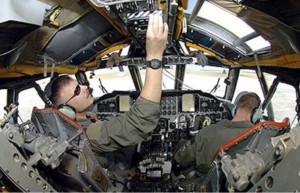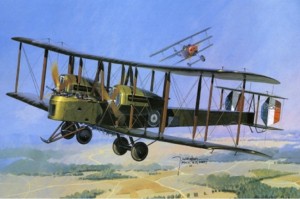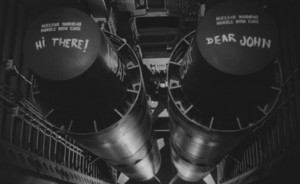Dear reader, the following is an extract from the New York Times. And we, the earthbound editors, think in light of recent controversy over the Australian Submarine project and other numerous and grotesquely expensive defence procurement decisions, this tells us something about our place in the industrial military complex. Also, refreshingly, it gives us an insight into the mindset of our treasured ally, the United States of America. And indicates obliquely that the ‘US of A’ is not entirely consumed by a self-destructive gun culture. The following is authored by the improbably named “Dave Smith”. We have a suspicion, (unfounded) that it’s G.T up to his usual tricks. We urge you to have a look at the original article, as we have substituted the images with some of our own. This may detract from the most excellent, and stirring tale of All-American know-how and derring do.

Designer of the B52. General Major Dr Walter Lippisch. Scientific protege of the Eisenhower administration and a previously unspecified regime.
‘OVER THE GREAT PLAINS — Glance down from the ageless expanse of blue sky into the cockpit of the Air Force’s largest bomber, and the panorama is decidedly more dated — banks of steam gauges quiver above aluminum levers built during the Eisenhower administration, obsolete knobs and dials unused in decades gather dust.
And much of the rest of the mammoth B-52 bomber is just as antiquated. Vacuum tubes have been replaced with microchips, and the once-standard ashtrays are gone. But eight engines along the wings still connect to the cockpit by yards of cables and pulleys, and the navigator often charts a course with a slide rule.
“It’s like stepping back in time,” said Capt. Lance Adsit, 28, the pilot. He banked left to start a mock bombing run, wrestling a control yoke forged decades before he was born. Time had stripped it entirely of paint.

Australian B52 pilot , (on secondment to USAF) adjusting VHS tape recorder for in flight entertainment. Uniforms kindly lent on this occasion by the Minister for Science and Innovation Mr. Christopher Pyne, from his personal collection.
“I love the B-52,” Captain Adsit said. “But the fact that this is still flying is really insane.”
A few minutes later, his onboard navigation computers crashed.
The first B-52 bomber was built more than 60 years ago, but in the absence of a reliable replacement, the jets are still used by Air Force pilots today.
The B-52 is an Air Force plane that refuses to die. Originally slated for retirement generations ago, it continues to be deployed in conflict after conflict. It dropped the first hydrogen bomb in the Bikini Islands in 1956, and laser-guided bombs in Afghanistan in 2006. It has outlived its replacement. And its replacement’s replacement. And its replacement’s replacement’s replacement.
Air Force commanders are now urging the Pentagon to deploy B-52s in Syria.
“We’re ready, we’re hungry, we’re eager to be in the fight,” said Col. Kristin Goodwin, who commands the Second Bomb Wing at Barksdale Air Force Base in Louisiana, where about half of the bombers are based.
Now in its 60th year of active service, the bomber is slow, primitive and weighed down by an infamy lingering from the carpet bombing of Vietnam in the 1960s. But 76 B-52s still make up the bulk of the United States’ long-range bomber fleet, and they are not retiring anytime soon. The next potential replacement — the Long Range Strike Bomber, which has yet to be designed — is decades away, so the B-52 is expected to keep flying until at least 2040. By then, taking one into combat will be the equivalent of flying a World War I biplane during the invasion of Iraq in 2003.

B52 replacements. The proposed long range strike bomber and super stealth fighter captured during top secret testing over Maralinga. The Australian Government is a major financial backer via the Innovation Statement.
The unexpectedly long career is due in part to a rugged design that has allowed the B-52 to go nearly anywhere and drop nearly anything the Pentagon desires, including both atomic bombs and leaflets. But it is also due to the decidedly underwhelming jets put forth to take its place. The $283 million B-1B Lancer first rolled off the assembly line in 1988 with a state-of-the-art radar-jamming system that jammed its own radar. The $2 billion B-2 Spirit, introduced a decade later, had stealth technology so delicate that it could not go into the rain.
“There have been a series of attempts to build a better intercontinental bomber, and they have consistently failed,” said Owen Coté, a professor of security studies at the Massachusetts Institute of Technology. “Turns out whenever we try to improve on the B-52, we run into problems, so we still have the B-52.”

The other BUFF! Pictured here with SLH, (Santa’s little helper). Now working to ensure proper channeling of tax dollars into the Industrial military complex to keep us SAFE!!
The B-52 bomber is the longest-serving U.S. military aircraft in history. Although it never fought in the nuclear war it was designed for, it has fought in nearly every other war.
Officially, the B-52 is called the Stratofortress, but flight crews long ago nicknamed it the B.U.F.F. — a colorful acronym that the Air Force euphemistically paraphrases as Big Ugly Fat Fellow.
Too outmoded to be a stealth bomber, the B-52 has become the anti-stealth bomber — a loud, obvious and menacing albatross. It has pummeled armored divisions in Iraq, and has laid thunderous walls of destruction over Taliban positions in Afghanistan.
“The big plane was very good,” said one beaming Northern Alliance commander in 2001. In more recent years, it has flown only what the Air Force calls “assurance and deterrence” missions near North Korea and Russia. In 2013, when China claimed disputed airspace over the South China Sea, a pair of B-52s soared through in defiance.
“The B.U.F.F. is like the rook in a chess game,” said Maj. Mark Burley, the co-pilot for the training mission over the Great Plains. “Just by how you position it on the board, it changes the posture of your adversary.”
But the usefulness of the large bomber — and bombers in general — has come under question in the modern era of insurgent wars and stateless armies. Even after millions of tons of bombs were dropped in far corners of the world, most foes targeted by the bomber, including those in Iraq, Afghanistan and Vietnam, ultimately prevailed’.
Dear reader; Stay tuned for tomorrows enthralling second instalment…. it’s sure to be a BLAST!!


Still flying, The Tupolev-95 ‘Bear’ bomber also remains the heavy-lifter of the Russian Russian Air Force. This four-turboprop leviathan first flew in 1952 (the same year as the B52), entered service in 1956 and is expected to serve the Russian Air Force until at least 2040.
Mark my words, when we’re walking on Mars, these crates will still be lumbering around the skies, crapping on people!
Far superior bombers, the Valiant and the Vulcan, were retired yonks ago by the RAF.